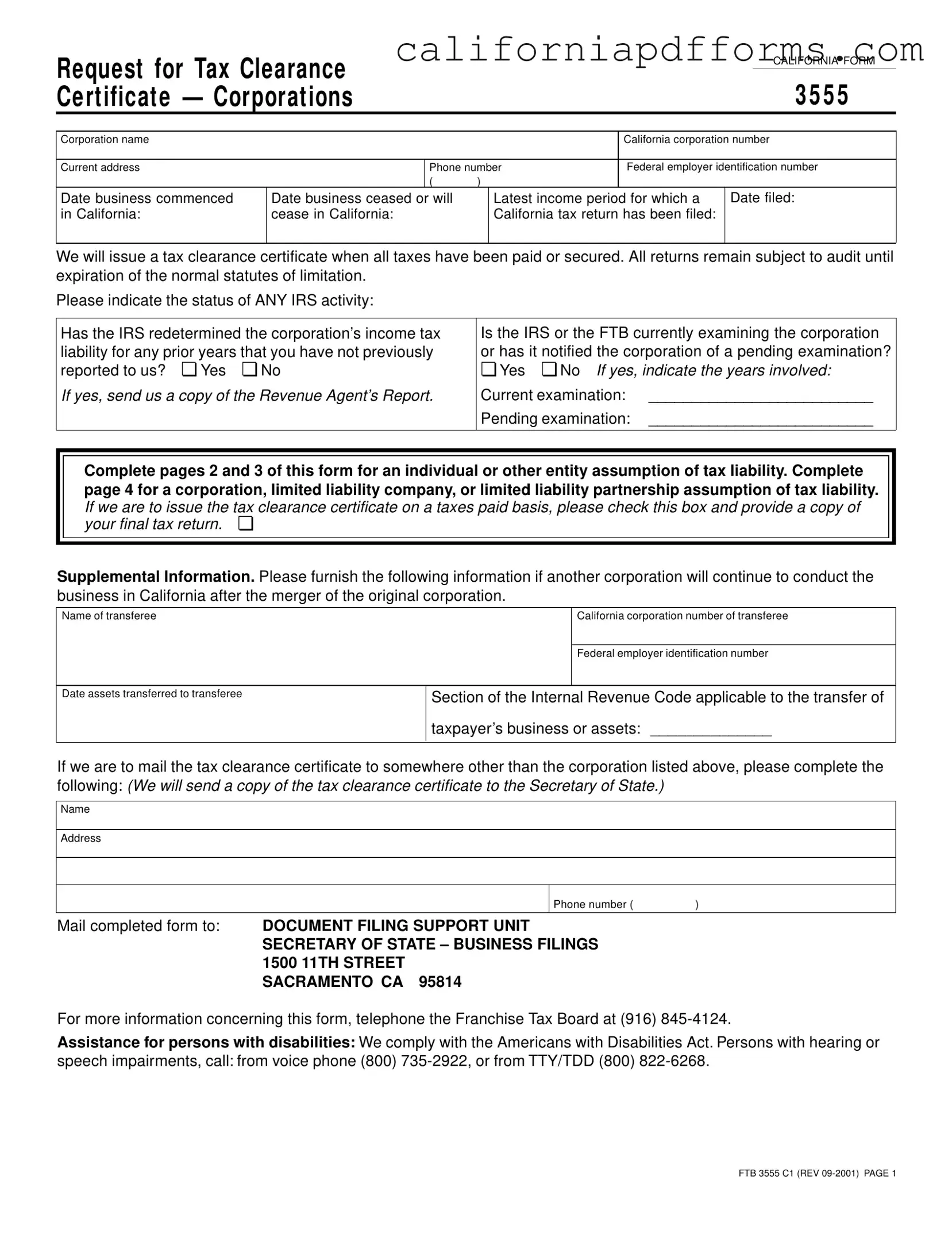The California 3555 form, also known as the Request for Tax Clearance, is used by corporations to request a tax clearance certificate from the Franchise Tax Board (FTB). This certificate confirms that all taxes owed by the corporation have been paid or secured. It is often required during the dissolution of a corporation or when transferring assets to another entity.
Any corporation that is dissolving or merging with another entity in California must file this form. Additionally, if a corporation is transferring its assets to another corporation, the California 3555 form should be submitted to ensure that all tax liabilities are addressed. The form is necessary to obtain a tax clearance certificate, which is often required by the Secretary of State for business filings.
To complete the California 3555 form, the following information is typically required:
-
Corporation name and California corporation number
-
Current address and phone number
-
Federal employer identification number (FEIN)
-
Dates related to business commencement and cessation
-
Latest income period for which a California tax return has been filed
-
Status of any IRS activity concerning the corporation
Additional information may be needed if the business is being transferred or if an individual or trust is assuming tax liabilities.
Once the California 3555 form is submitted, the FTB will review the information provided. If all taxes have been paid or secured, the FTB will issue a tax clearance certificate. However, all returns remain subject to audit until the expiration of the normal statutes of limitation. If there are any outstanding tax issues, the FTB may require additional information or documentation.
Can the tax clearance certificate be mailed to a different address?
Yes, if you want the tax clearance certificate sent to a different address than the corporation's listed address, you must provide that address on the form. The FTB will send a copy of the certificate to the Secretary of State, as well as to the address specified on the form.
If there is any IRS activity concerning the corporation, such as an examination or redetermination of income tax liability, it is crucial to indicate this on the form. You should also provide details about the years involved and submit a copy of any relevant IRS reports, such as the Revenue Agent’s Report. This information is necessary for the FTB to assess the corporation's tax status accurately.
